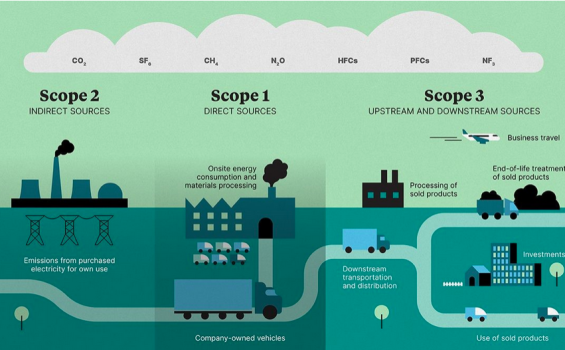
Carbon Capture, Use and Storage
8 November 2024
First, what is Carbon Capture (CC)? This technology has been used for 60 years to remove CO2 and other contaminant gases from extracted natural gas and oil. This is done in a ‘scrubber’. As it comes out of the ground at high pressure, fossil gas is passed through a solvent which absorbs the CO2, leaving the methane behind. In Woodside’s Browse Basin proposal the extracted gas contains approximately 20% CO2 and Woodside is trying to develop its own carbon capture technology. On the other hand, Scarborough gas contains only 0.1% CO2.
This type of carbon capture is only relevant before combustion of the methane. 85-90% of CO2 emissions occur when the gas is used or burnt (scope 3 emissions).
The second step is carbon capture and Storage (CCS), where an attempt is made to send the CO2 underground to store it in saline aquifers or other underground deposits. There is no guarantee that the CO2 won’t leak back out into the atmosphere. Chevron has spent billions of dollars on CCS at its Barrow Island facility. However, technical issues have meant that commissioning was delayed by several years and the plant is only 50% efficient, when it is working. Only two CCS projects in the world (both in Norway) are working at near 100% efficiency, but both have encountered technical problems.
It is technically much harder to capture CO2 after combustion in a flue or smokestack, because the gas concentration and pressure is lower than at the well. Approximately 90% of proposed CC in the power sector has failed, at a cost of billions of dollars. CCS has been moderately successful in industrial processes, where burning does not occur, such as in producing fertilisers, ethanol, hydrogen, iron and steel.
The third component of this puzzle is carbon capture Use and storage (CCUS). This sounds good, doesn’t it? Why not use the CO2 that has been collected? However, most of the use that has been made of the captured CO2 is to send it underground to release more oil and gas. This is called Enhanced Oil Recovery, and it makes up 73% of existing capture capacity. So CCUS is actually greenwashing which increases carbon emissions by producing more fossil fuels. However, recent developments in CCUS are trying to use the CO2 as feedstock for chemical processes.
To date, carbon capture and storage has made a minuscule contribution to reducing emissions. A historical total of less than 500Mt (megatonne) has been captured globally. Australia’s annual emissions are around 500Mt, and this is just 1.3% of global emissions.
Finally, the world needs to reduce the amount of CO2 out there, in addition to reducing the amount we are adding. One component of this is carbon sequestration through increasing global vegetation coverage, through increasing forestation, allowing regrowth of remaining natural ecosystems and implementation of conservation agriculture. However, this is arguably not sufficient to draw down the required amount of CO2 in the biosphere.
Direct Air Capture (DAC) has been proposed to have a role in lowering atmospheric CO2, by capturing it directly from the atmosphere and either storing it or utilising it. However, this is a costly and immature technology, because the CO2 concentrations are very low. It is difficult to make a business case for DAC.
Key Points:
Carbon Capture at the point of extraction is a mature technology.
Carbon Capture from combustion is technically very difficult and expensive.
Carbon Capture and Storage has only been successful in a very small number of cases.
Carbon Capture Use and Storage is greenwashing for Enhanced Oil Recovery – a process which increases fossil fuel extraction.
Direct Air Capture of CO2 from the atmosphere is a costly and immature technology which will likely be needed to meet Net Zero Emissions goals.
Sources
https://ieefa.org/resources/carbon-capture-crux-lessons-learned
https://ieefa.org/resources/carbon-capture-ccs-ccus-ccu
https://ieefa.org/resources/norways-sleipner-and-snohvit-ccs-industry-models-or-cautionary-tales
https://ieefa.org/resources/infographic-carbon-captures-methane-problem


Discussion